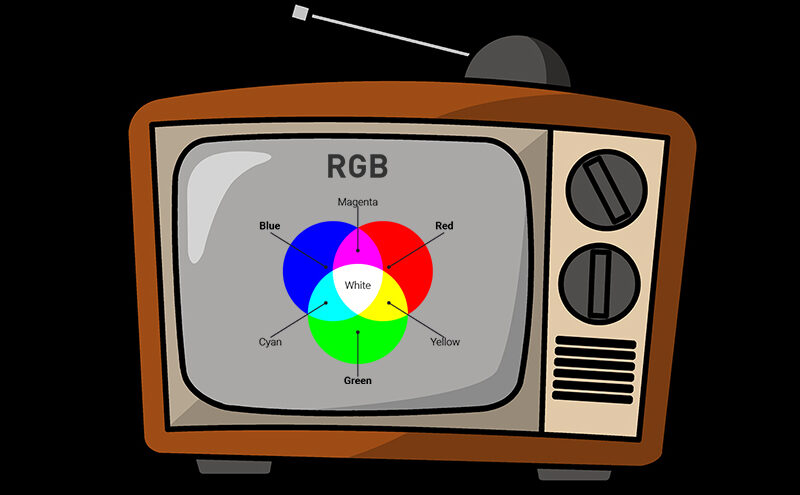
CHAPTER: 2
RGB color space and its component:
As we learned earlier, we have the ability to define a color space against a standardized reference, thanks to the CIE. But in practical terms, how do we clearly and simply invoke these definitions to describe a capture device or display? The most common way is to specify a gamut, gamma, and white point.
Gamut / Primaries:
Color gamut is defined as the range of colors that a particular device could produce or record. It is usually shown in a triangle area enclosed by the primary colors of the device. For example, the primary colors of the monitor are red, green, and blue; hence, the color gamut of the monitor is shown in a triangle area enclosed by the color coordinates of the monitor’s red, green, and blue colors.
In other words, the gamut is the subset of perceivable color, essentially a set of possible hues and their respective maximum saturations.
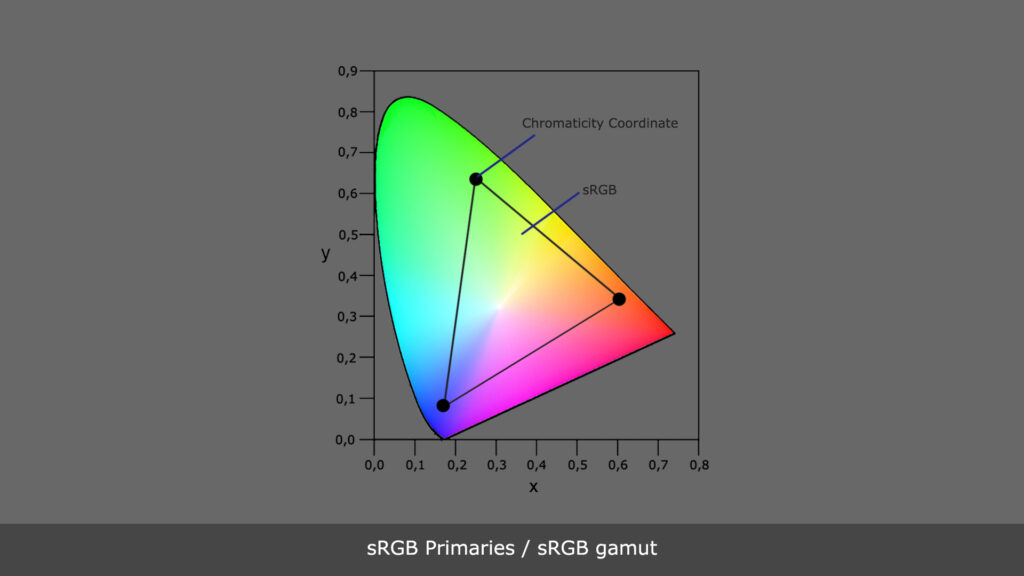
Now a days if you decided to buy a laptop or monitor, I believe most of us already have encountered a scenario where it says in the specification ” 100% sRGB, and 90% Adobe RGB”. It basically says that monitor will support both sRGB and Adobe RGB color space, but it will cover 100% sRGB color space, but only 90% of Adobe RGB color space.
So basically, color gamut represents all the colors that a particular device can produce within a particular color space.
As you can see in the above image, gamut can easily be plotted on a 2D graph, but in doing so we haven’t yet fully defined our color space. To do that we need a third dimension—Luminance.
Gamma / Tone Mapping / Transfer Function:
In order to define the third dimension – Luminance, the gamma curve is useful. A gamma curve or tone mapping curve is concerned with defining a specific distribution of luminance values. In its simplest sense gamma describes how tones are mapped into a range of values between maximum black and maximum white.
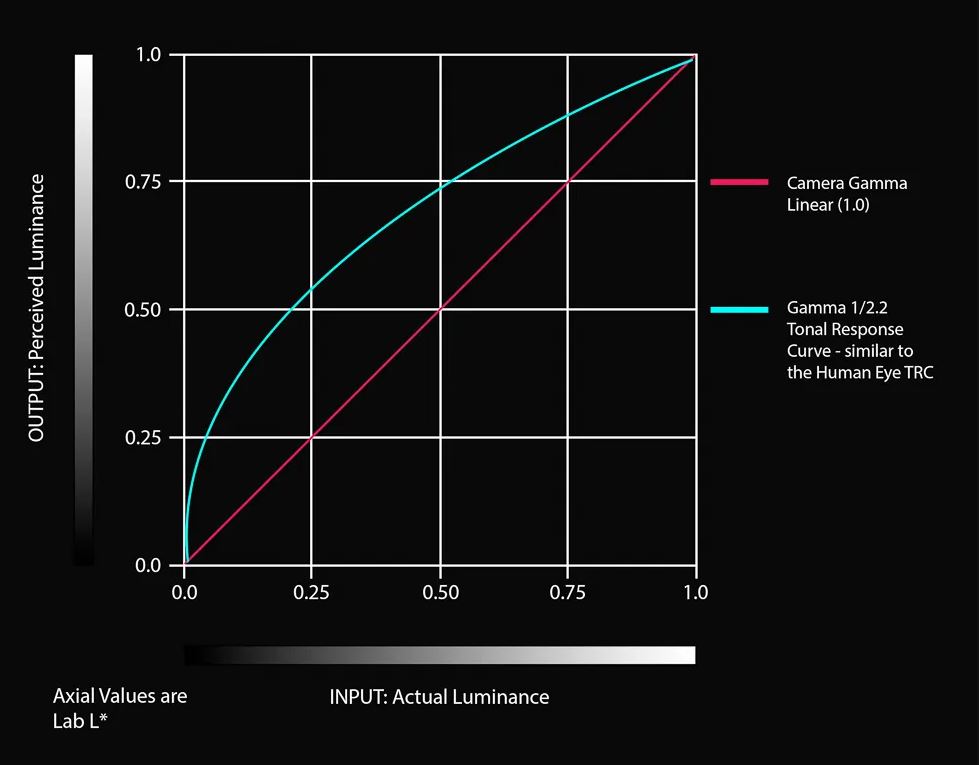
Why do we prefer non-linear distribution of luminance value over linear distribution?
With a digital camera, when twice the number of light hit the sensor, it receives twice the luminance information (a “linear” relationship). That’s not how our eyes work. Our eyes do not perceive light the way cameras do. Because our eyes do not perceive light linearly (like real-world changes). Human vision has a “gamma” of sorts — a boosting curve that pumps up our perception of darkness and compresses highlights.
Human vision is more sensitive to the relative differences in darker tones than in brighter tones. So, if we keep luminance distribution to linear, then too many bits will be allocated towards the tonal region (brighter), where human vision cannot distinguish between tones. Because of this, not using a gamma correction is wasteful.

Gamma curve, also called “Transfer Function”, helps to encode better bits. There are two transfer functions:
-
- OETF (Encoding): Opto-Electronic transfer function. Converts Linear lights into Video Signal, typically within a camera.
- EOTF (Decoding): Electro-optical transfer function, which converts the video signals into the linear light output of the display.

Let’s understand different types of commonly used linear and non-linear curves:
RAW:
A RAW file is the uncompressed and unprocessed image data captured by a digital camera or scanner’s sensors. And preserves 100% information that the camera captures and that’s why they are massive in file size. Raw files are named so because they are not yet processed and therefore are not ready to be displayed. You can think of RAW files as a film “negative”. Normally, the image is processed by a raw converter in a wide-gamut internal color space where precise adjustments can be made before conversion to a “positive” file format such as TIFF or JPEG (which are gamma encoded) for display.
In a single line, RAW is a supermassive file, which allows you to change everything in the post.
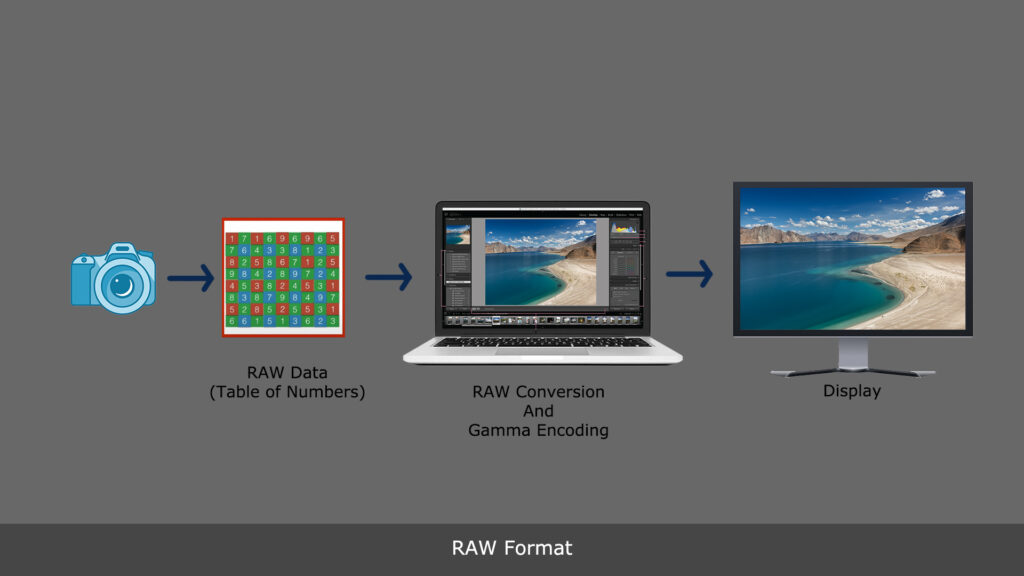
To me, Raw is like time travel. We can change anything like ISO, White Balance, and Picture Profile in the post. It is like I have time traveled in the day of shooting and changing the camera settings as per my need.
RAW Data and Linear Gamma:
RAW file distributes Luminance information in a linear format. This is called “Linear Gamma or Linear”. It behaves in a similar way how the camera captures lights. When linear gamma is viewed on a Rec-709 monitor it looks really dark, because they are not gamma encoded. Linear Gamma is not useful for viewing purposes, but it is very useful for image manipulation.

Now in order to see the image correctly (which is more familiar to the eye) in the monitor, we need to encode gamma (non-linear distribution of luminance) during the RAW conversion process.

“Linear Gamma or Linear” is not a Color Space; it is a “Transfer Function”.
Picture Profile:
Now we have seen what RAW format is and Linear Gamma is. Now let’s understand what a picture profile is and why it is important.
We have seen RAW is unprocessed data, so in order to display it we need to process it with a RAW converter. But, the camera can also internally process the captured data and save the image using OETF transfer function (gamma encoding), so that the camera-processed image looks perfect to human vision. But when the camera processed RAW data into the image it always ends up losing information.

We have seen RAW data is huge and requires massive storage space. But RAW gives flexibility in post and grading. But, on the other hand, the in-camera processed image takes less space for storage but loses image information.
In order to use process images but introduce some of the flexibilities of RAW, manufacturers introduced Flat Profile and Log Profile.
What is Log or Flat profile?
To put it simply, Logarithmic footage and Flat footage, contain more details of the scene. This kind of footage is not intended to be used without editing so it needs further alterations to be used as the final footage.
In Log footage the purpose is to capture highlights, shadows, and whites, with the highest range of precision by getting the most out of the camera’s dynamic range. But what is missing in this recording mode are the colors. So it’s necessary to color grade the Log footage in post to get the colors back into the image.

Let’s understand with the help of the example.
In any natural scene, like the image below, there are bright areas and dark areas. If we sample the brightness from the various parts of the image, we will have the dynamic range of the image, which is basically the difference between the darkest and the brightest point in the scene

Naturally, you will assume that the TV can display all the information, unfortunately not. TV has very limited dynamic range, so, if we trying to display that image on a TV, we will be losing and throwing away a lot of the information of the scene in the highlight and shadows. So, our image will end up looking wired in the TV. All the information in the highlight and shadow will be lost, and we will end up with very contrasty image.

The solution came with cameras; camera can record way more information than TV can display. And cameras can compress the information to match the color space of the TV while keeping all the information in the file to be used later in the color grading. But there is a problem, when we display the file coming from a camera on a TV, it end up looking really flat, way less saturation and way less contrast.
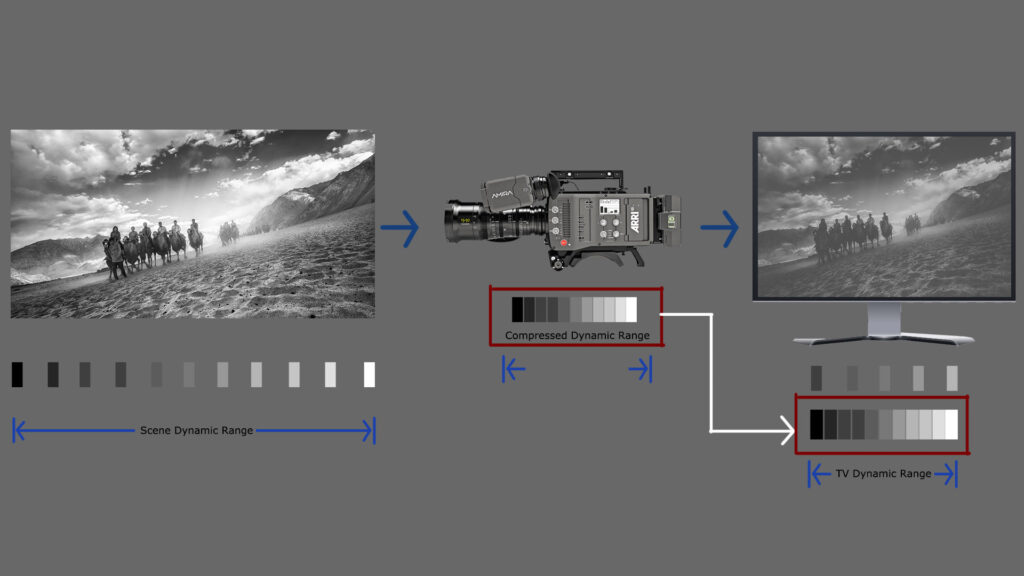
In order to view it in a correct way, we need to color correct the image in order to look natural on a TV.
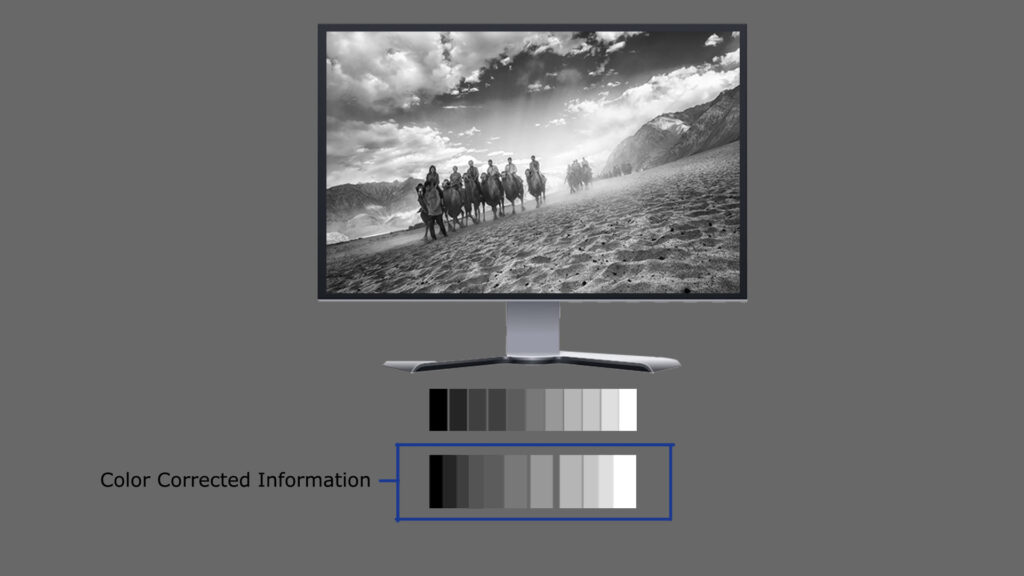
And these Flat profiles come in two different types. “Flat Profile” and “Log Profile”.

Flat Profile vs Log Profile:
Both Flat and Log profiles looks flat on screen. The main difference between them is distribution of information. Usually, Log profile looks dimmer than the Flat profile.

So, should I always shoot Log/Flat profile to preserve dynamic range?
-
-
- Though Log/Flat profile give you the best dynamic range, but we should not always shoot Log/Flat profile. There are reasons why.
- 8 bit vs. 10 bit Log: If you color correct 8 bit log, it might end up banding in the image.
- Noise: When you lift black, it will introduce noise in the image. So, if you have more blacks in the midtones. It will introduce noise.
- Viewer Lut: As Log/Flat profile looks flat, you should apply viewer lut in external monitor to see things properly. But stills it is not always intuitive.
- Low contrast scene: There is no need to shoot in Log/Flat profile in low contrast scene.
- Controlled environment: When you have controlled lighting situation, then we generally do not need to shoot in Log/Flat.
-
There are other types of gamma-encoded profiles are available apart from Log and Flat. The most sought-after profile is sRGB and Rec.709. Apart from that many digital cameras offers different types of camera profile such as Prores, Landscape, Portrait, etc.
White Point:
If I hand you a sheet piece of paper inside a fluorescent-lit office, then later show you the same piece of paper outside on a sunny day, you’ll identify it as white in both scenarios. This is because our eyes are constantly adapting to our environment, using context and visual cues to define white. Digital sensors and displays are (generally) not designed to do this, so we have to provide this information (numerical color value) for them.
This also means we need this information in order to precisely define a color space. The white points define the white color of a particular color space. White point is often expressed as a color temperature, such as 3200K or 5600K.
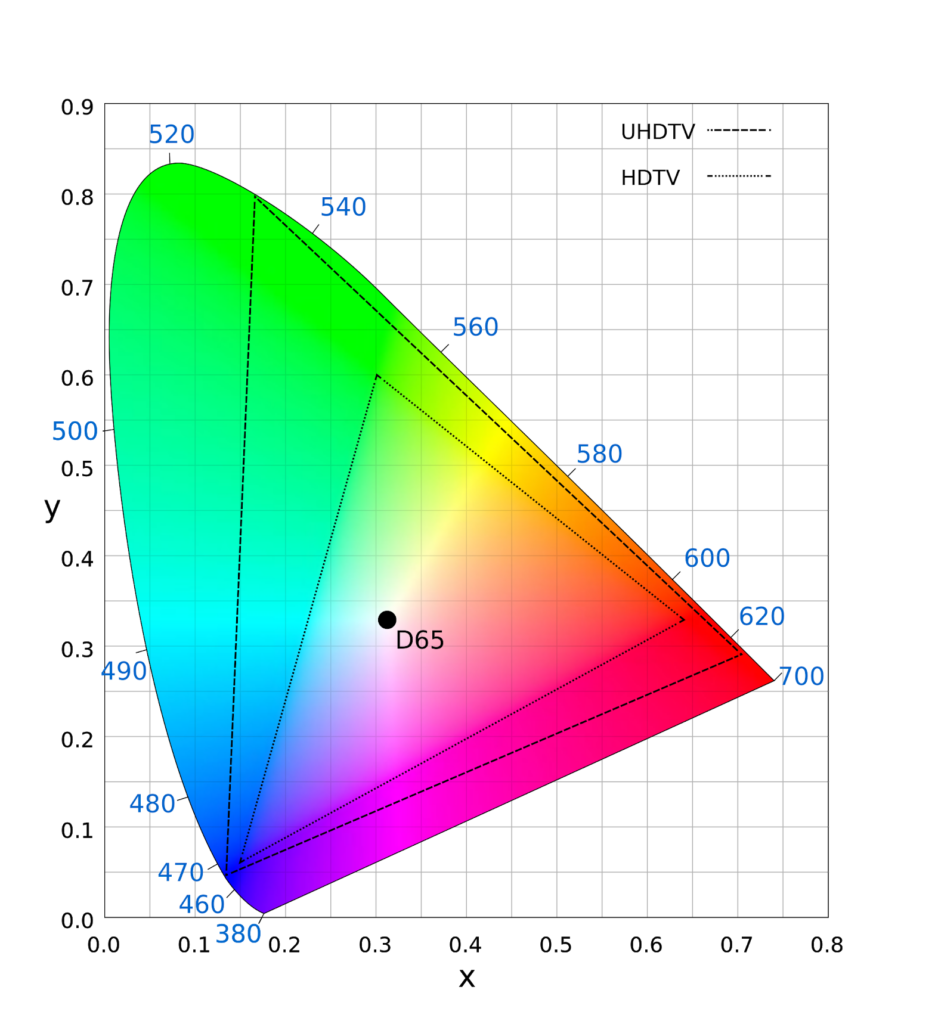
Now that we’ve discussed these three parameters, here are some practical examples:
-
- An Arri Alexa records media in Arri Wide Color Gamut, with an Arri Log C tone mapping curve, and a white point ranging from 2,000K to 11,000K
- An SDR TV has a Rec 709 gamut, a Gamma 2.4 tone mapping curve, and a standard illuminant D65 white point.

